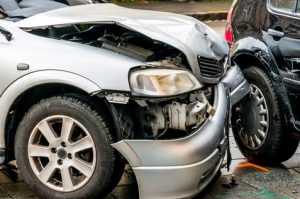When you’re involved in a car accident, any damage to your car will likely reduce its value. This is true even if the car is fully repaired, as future buyers will be a little wary of buying a vehicle that’s been in a crash.
If you’re thinking about selling your car after an accident, it’s important to be aware that you may be dealing with a diminished car value. If the crash was caused by someone else’s negligence, you may be able to recover compensation for the diminished car value after an accident.
For more information on how to determine the diminished value after a car accident, contact a Mississippi car accident attorney from the law offices of Derek L. Hall, PC.
What Is Diminished Value?
Simply put, the diminished car value is the difference between what your vehicle was worth before an accident and what it’s worth after the accident. Even if your car is fully repaired after the crash, any potential future buyer will be more skeptical of purchasing your vehicle because it has a history of crash damage.
Though your vehicle may be fully repaired, the damage it’s already suffered makes future mechanical failures and additional repair work more likely. This is understandable from a buyer’s perspective, but it’s a frustrating fact for accident victims.
Types of Diminished Value
There are three different types of diminished value that you should be aware of following an accident:
- Inherent diminished value – Any time a vehicle has a history of damage, it’s automatically assumed to be worth less than the same vehicle without any damage. This is known as inherent diminished value. It represents the amount the vehicle’s worth will decrease because of that accident history. One thing to note is that this category of diminished value assumes any repairs done were of optimal quality.
- Immediate diminished value – This represents the difference in a vehicle’s resale value after an accident happens but before any repairs are made. Most insurance companies provide repairs quickly after an accident, so this type of diminished value is rarely used when someone files a diminished value claim.
- Repair-related diminished value – If a vehicle receives low-quality repairs, it may be said to have experienced repair-related diminished value. In essence, this is the decrease in value a vehicle suffers because it is not repaired back to its original state. For example, the paint may have been replaced with a color that doesn’t exactly match, or aftermarket parts are used instead of equipment from the original manufacturer.
How Can My Car’s Value Be Calculated After an Accident?
Most insurance companies use the same calculation to determine a vehicle’s diminished value after an accident. The formula works like this:
- Determine your car’s baseline value by consulting a guide from the National Automobile Dealers Association (NADA) or the Kelley Blue Book.
- Once you’ve figured out your baseline value, apply a 10 percent cap to that value, as this is the maximum amount you’re likely to receive from your insurance company. (You can do this quick calculation by dividing your vehicle’s value by ten.)
- After you’ve applied the 10 percent cap, take that number, and apply a damage multiplier. The more severe the damage is to your vehicle, the less you’re likely to receive for it. The multipliers usually used by insurance companies are:
- 1.00 – Severe structural damage
- 0.75 – Major damage to structure and panels
- 0.50 – Moderate damage to structure and panels
- 0.25 – Minor damage to structure and panels
- 0.00 – No structural damage
- Now take that figure and apply a mileage multiplier. The more mileage on your vehicle, the less it’s worth. The multipliers usually used at this step in a diminished value calculation are:
- 1.00 – 0-19,999 miles
- 0.80 – 20,000-39,999 miles
- 0.60 – 40,000-59,999 miles
- 0.40 – 60,000-79,999 miles
- 0.20 – 80,000-99,999 miles
- 0.00 – 100,000 miles or more
That’s a lot of numbers, so let’s use a practical example. Suppose you have a vehicle with a baseline value of $20,000. The vehicle has 25,000 miles and sustained minor structural damage.
To determine the vehicle’s diminished value, you would take 20,000 and multiply it by 0.10 to account for the 10 percent insurance cap, giving you a figure of $2,000. Then you would multiply $2,000 by 0.25 to account for the structural damage, which would give you a value of $500. Finally, you would multiply $500 by 0.80 to get your final diminished value of $400.
How Our Car Accident Attorneys Can Help
If you’ve been involved in an accident and your vehicle lost a lot of its value, a car accident lawyer at Derek L. Hall, PC can help you file a claim to recover compensation for the vehicle’s diminished value. We can help make sure the paperwork is filed correctly and include the diminished value as part of a broader personal injury claim against the party who caused the accident. To learn more, contact our office today for a free initial consultation.


